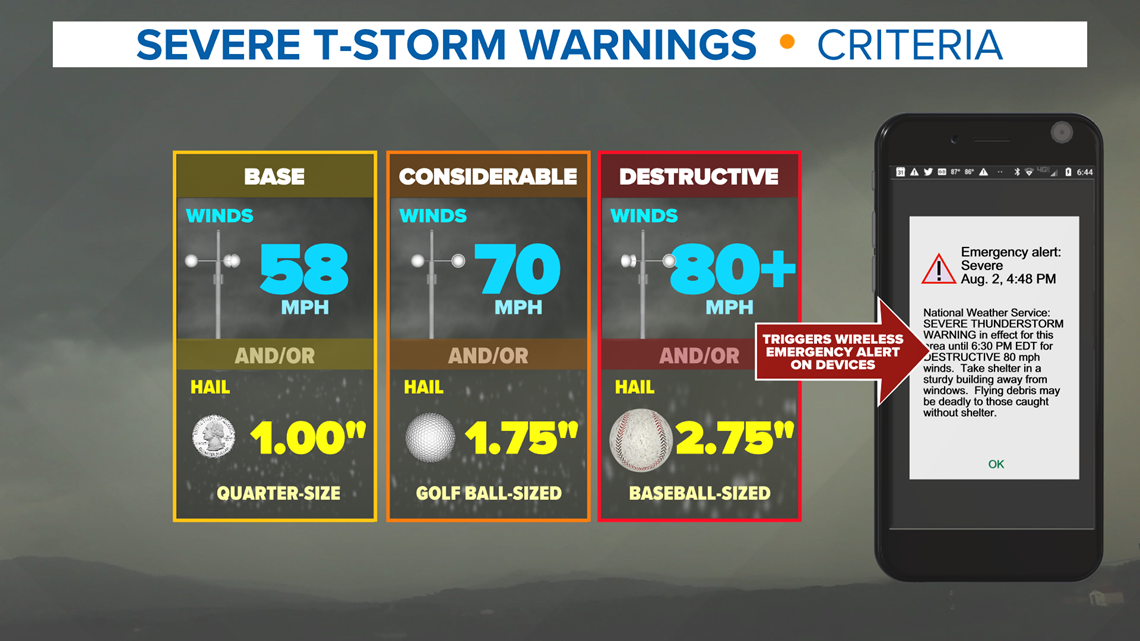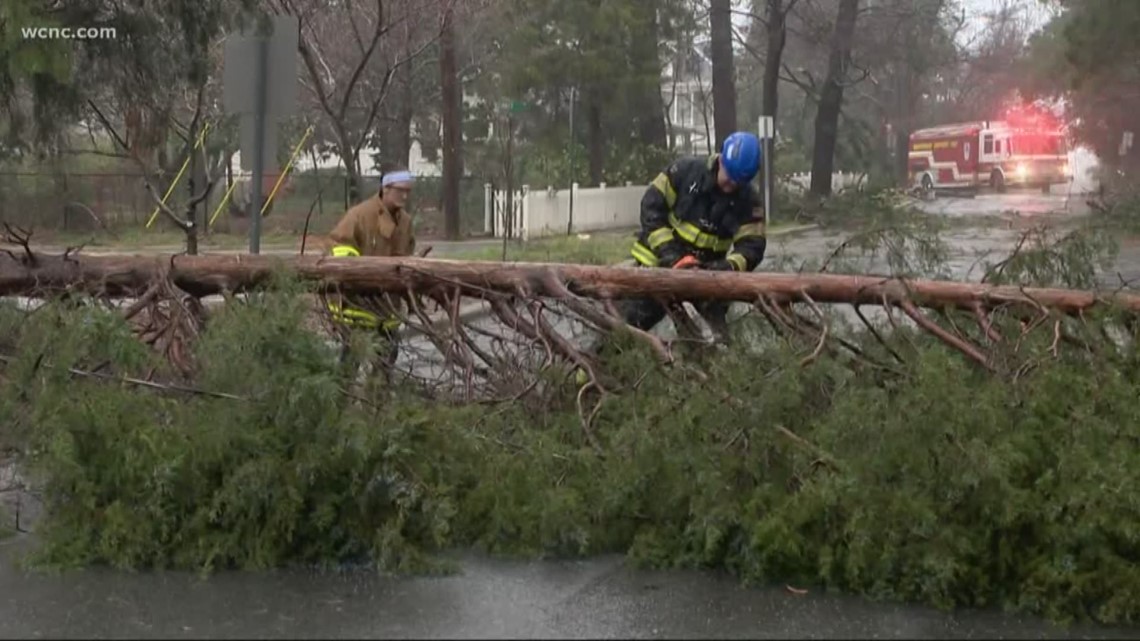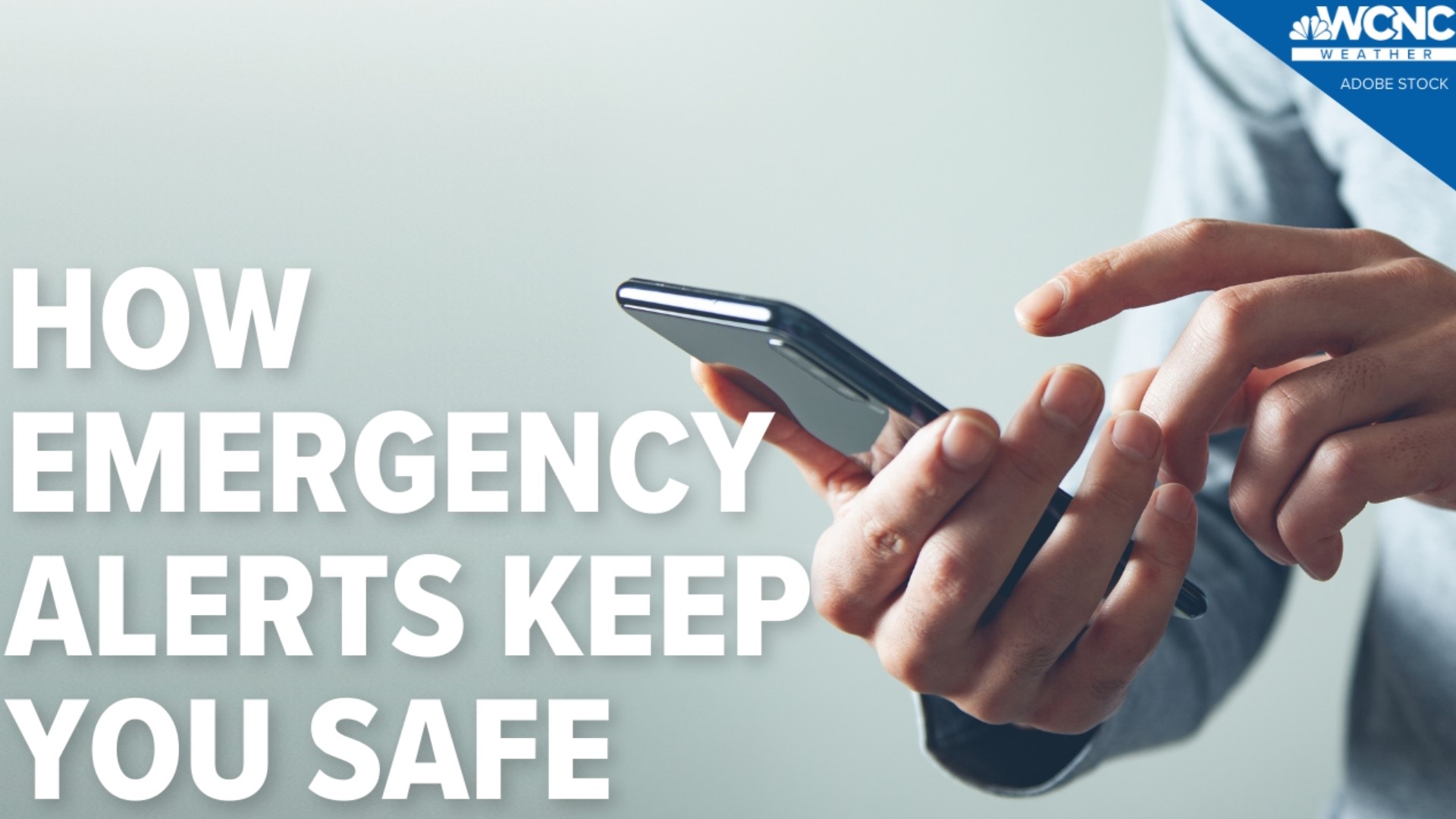CHARLOTTE, N.C. — Whether run-of-the-mill afternoon storms or a squall line along a cold front, severe thunderstorm warnings can indicate life-threatening conditions. But they shouldn't be treated the same way.
On Aug. 2, the National Weather Service implemented a new damage threat tag to severe thunderstorm warnings. By doing this, the NWS hopes to better convey the severity and threats to the public. This new tier of severe thunderstorm warnings will be distributed through the Wireless Emergency Alert System, which comes automatically on cell phones.
Viewers across the Charlotte Metro area, as well as the Foothills, Piedmont, and mountains, should be aware of this change.
If you have these alerts turned on, you will begin getting them straight to your smartphone if one of these more significant storms were to breach our region.


The new damage threats are broken up into three categories by the National Weather Service: base, considerable, and destructive.
A "base" damage threat describes what we are accustomed to seeing: 1" hail (or quarter-sized) and/or wind at or exceeding 58 mph. This will not activate a Wireless Emergency Alert (or WEA).
A "considerable" damage threat will include 1.75" hail (or golf ball-sized) and/or wind at or exceeding 70 mph. This will not activate a WEA.
A "destructive" damage threat has the potential to be the most harmful of the three. This includes 2.75" hail (or baseball-sized) and/or wind at or exceeding 80 mph. Warnings with this tag will activate a WEA within the warned area.


In the Carolinas, severe thunderstorms are responsible for about 90% of the wind damage we experience. This number is much larger than wind damage caused by tornadoes, according to WCNC Charlotte Chief Meteorologist Brad Panovich.
The ultimate goal of these new categories is to help the public note the urgency for immediate action and the significance of these storms, as they can cause damage to life and property.


Here's the important part to remember: if you receive one on your smartphone, you should find the most interior room of your home and stay there until the threat is over.
To see additional types of severe warning notifications, download and install the WCNC Charlotte app. You can trust the WCNC Charlotte weather team will have you covered every step of the way.

